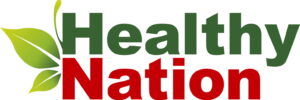The decision to breastfeed for a mother living with HIV is a complex one, influenced by factors such as geographical location, access to healthcare, and personal beliefs. While breastfeeding offers significant benefits for both mother and child, it also carries a risk of HIV transmission. This article will explore the best practices for HIV-positive mothers who choose to breastfeed and delve into the associated transmission risks.
Benefits of Breastfeeding for HIV+ Mothers
Despite the risks, breastfeeding offers numerous advantages for HIV-positive mothers and their infants:
- Improved infant health: Breast milk provides essential nutrients and antibodies, protecting infants from infections and promoting healthy growth and development.
- Reduced risk of infant mortality: In resource-limited settings, breastfeeding has been shown to reduce infant mortality rates.
- Enhanced maternal health: Breastfeeding can help in weight loss, uterine contraction, and bone mineral density recovery post-partum.
- Cost-effective: Breastfeeding is often more affordable and accessible than infant formula, especially in low-income communities.
- Bonding: Breastfeeding promotes a strong bond between mother and child.
Transmission Risks and Mitigation Strategies
The risk of HIV transmission through breastfeeding has significantly decreased with the advent of antiretroviral therapy (ART). However, it is essential to understand the factors influencing transmission and the measures to minimize risk:
- Viral load: A lower viral load in the mother is associated with a lower risk of transmission. Adherence to ART is crucial to achieve and maintain an undetectable viral load.
- Duration of breastfeeding: The longer the duration of breastfeeding, the higher the risk of transmission. Exclusive breastfeeding for the recommended period (usually six months) and introducing complementary foods timely can help reduce risk.
- Infant health: Infants with underlying health conditions may be at a higher risk of HIV transmission. Good infant health and nutrition are essential.
- Cracked nipples and mastitis: These conditions can increase the risk of transmission. Proper breastfeeding techniques and seeking medical attention for mastitis are important.
To minimize transmission risk:
- Early initiation of ART: Both mother and infant should start ART as soon as possible after birth.
- Adherence to ART: Consistent adherence to ART by the mother is crucial for maintaining an undetectable viral load.
- Exclusive breastfeeding: For the first six months, exclusive breastfeeding is recommended.
- Safe infant feeding practices: If formula is used, it should be prepared and stored hygienically.
- Regular HIV testing for the infant: Monitoring the infant’s HIV status is essential.
WHO Recommendations
The World Health Organization (WHO) recommends exclusive breastfeeding for the first six months for HIV-positive mothers in resource-limited settings where infant formula may be unsafe or inaccessible. However, in settings with strong healthcare systems and access to safe formula, formula feeding may be considered.
The Role of Healthcare Providers
Healthcare providers play a vital role in supporting HIV-positive mothers who choose to breastfeed. They should:
- Provide comprehensive counseling on infant feeding options.
- Offer support and education on breastfeeding techniques and infant care.
- Ensure access to ART for both mother and infant.
- Monitor the health of both mother and infant closely.
Conclusion
The decision to breastfeed or formula feed is a personal one for HIV-positive mothers. With appropriate support and adherence to guidelines, breastfeeding can be a safe and beneficial option for many women and their infants. However, it is essential to weigh the risks and benefits carefully in consultation with healthcare providers.
Note: This information is intended for general knowledge and informational purposes only and does not constitute medical advice. Always consult with a healthcare professional for personalized guidance.
Would you like to explore a specific aspect of breastfeeding for HIV+ mothers in more detail?









